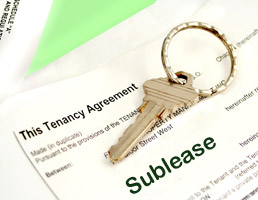 Many parties to real estate transactions focus not only on the house or the apartment that is involved in the transaction, but also on fixtures and items of personal property. Should a buyer expect that all lighting fixtures are included in the deal? What if a seller wants to take certain items with him? This post will address these issues.
Many parties to real estate transactions focus not only on the house or the apartment that is involved in the transaction, but also on fixtures and items of personal property. Should a buyer expect that all lighting fixtures are included in the deal? What if a seller wants to take certain items with him? This post will address these issues.
In New York, generally a seller will remove all easily movable items from the apartment or house being sold. These items include furniture, clothing, personal articles and the like. Of course, a buyer will want the seller to remove these items before closing and will be justified in refusing to close until the premises is in “broom clean” condition, as is required in the standard contract. Appliances, such as the refrigerator and stove, are to remain in the premises, as is covered in most standard contracts that we negotiate on behalf of our clients.
Fixtures may not as obvious. A fixture is an item that is attached to the wall, floor or ceiling. A built-in bookcase is not furniture to be removed by the seller, as it is attached to the wall. Chandeliers, wall sconces and other lighting fixtures are expected to remain after closing. There are cases when a seller wants to keep a particular fixture after closing or other cases where a buyer wants to make sure that a beautiful chandelier is not removed by the seller.




 Every person who dies, whether wealthy or not, will owe money. Whether there is a credit card balance outstanding or estate taxes due to the State of New York, most people will leave this world with a financial obligation of some type. The questions to be addressed in this blog post involve how the fiduciary of the estate should address such debts and whether the fiduciary is personally responsible for the debts. Also, should debts of the deceased be deducted from estate proceeds before distribution to beneficiaries?
Every person who dies, whether wealthy or not, will owe money. Whether there is a credit card balance outstanding or estate taxes due to the State of New York, most people will leave this world with a financial obligation of some type. The questions to be addressed in this blog post involve how the fiduciary of the estate should address such debts and whether the fiduciary is personally responsible for the debts. Also, should debts of the deceased be deducted from estate proceeds before distribution to beneficiaries? One of the most frequently asked questions when our firm meets with a new client relates to the awarding of attorney’s fees. Many of our landlord-tenant clients ask us whether they can recover their attorney’s fees in Court from the other party in the litigation. The answer to this question is not a simple one, and this blog post will answer under what circumstances a party may recover their attorney’s fees from the other party, whether in a landlord-tenant litigation, or other type of case.
One of the most frequently asked questions when our firm meets with a new client relates to the awarding of attorney’s fees. Many of our landlord-tenant clients ask us whether they can recover their attorney’s fees in Court from the other party in the litigation. The answer to this question is not a simple one, and this blog post will answer under what circumstances a party may recover their attorney’s fees from the other party, whether in a landlord-tenant litigation, or other type of case. 
 First, we would like to wish all followers of our blog a happy and healthy 2015. We look forward to continued successful legal outcomes for all of our clients in the New Year.
First, we would like to wish all followers of our blog a happy and healthy 2015. We look forward to continued successful legal outcomes for all of our clients in the New Year.  Maurice Sendak was a beloved children’s book author and illustrator whose death two years ago has
Maurice Sendak was a beloved children’s book author and illustrator whose death two years ago has A
A  Board members of cooperative and condominium buildings are hard working volunteers who are subject to what may be undeserved criticism. In other cases, a board may be treating a particular unit owner unfairly or there may be a general sense among neighbors that the board is doing a poor job.
Board members of cooperative and condominium buildings are hard working volunteers who are subject to what may be undeserved criticism. In other cases, a board may be treating a particular unit owner unfairly or there may be a general sense among neighbors that the board is doing a poor job.  Even Halloween gives rise to legal issues that may pertain to our blog readers. This blog post will address haunted houses, zombie houses, ghosts and other scary situations from a legal perspective.
Even Halloween gives rise to legal issues that may pertain to our blog readers. This blog post will address haunted houses, zombie houses, ghosts and other scary situations from a legal perspective. Quite often,
Quite often,